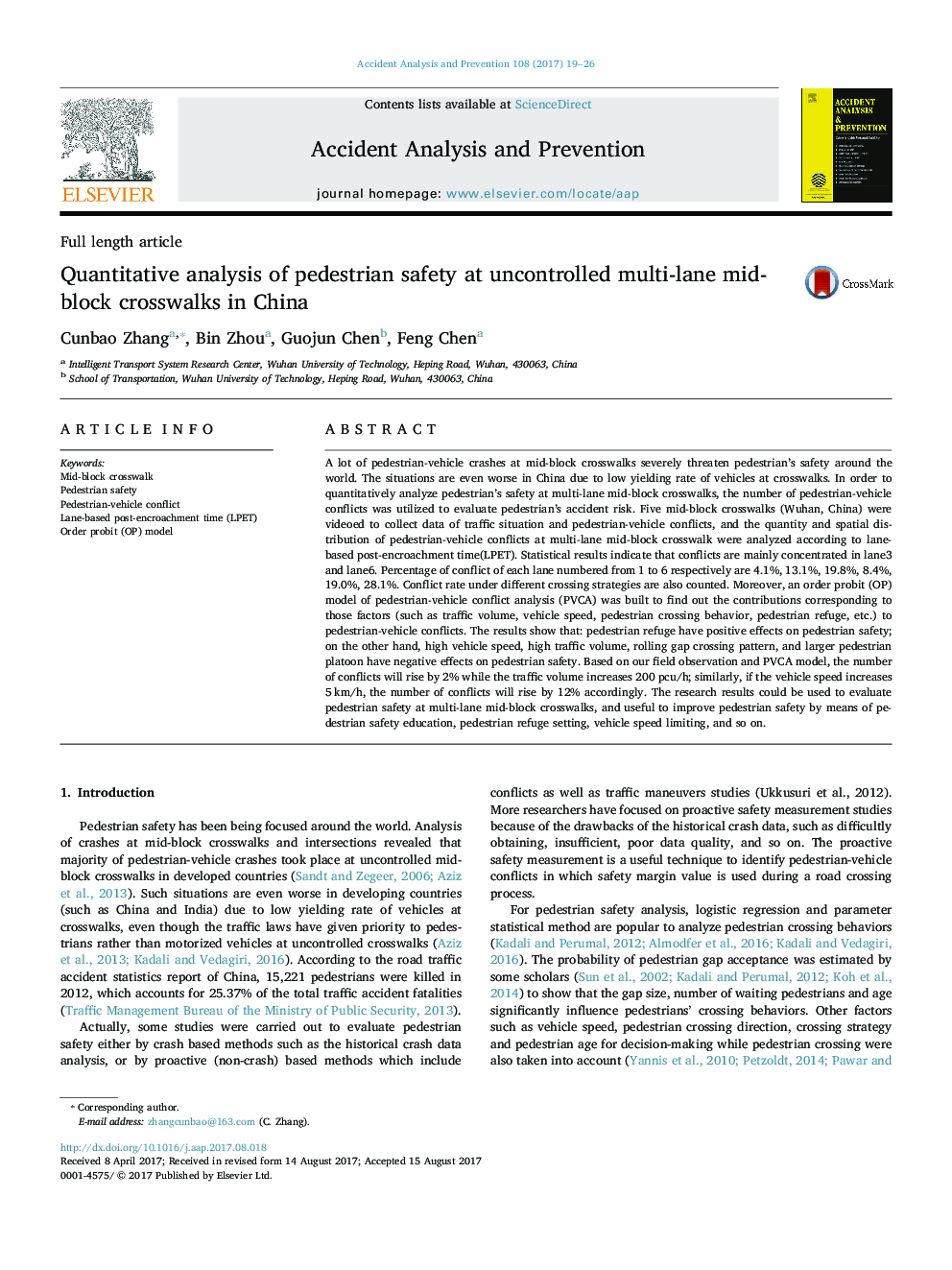| Article ID | Journal | Published Year | Pages | File Type |
|---|---|---|---|---|
| 4978502 | Accident Analysis & Prevention | 2017 | 8 Pages |
Abstract
A lot of pedestrian-vehicle crashes at mid-block crosswalks severely threaten pedestrian's safety around the world. The situations are even worse in China due to low yielding rate of vehicles at crosswalks. In order to quantitatively analyze pedestrian's safety at multi-lane mid-block crosswalks, the number of pedestrian-vehicle conflicts was utilized to evaluate pedestrian's accident risk. Five mid-block crosswalks (Wuhan, China) were videoed to collect data of traffic situation and pedestrian-vehicle conflicts, and the quantity and spatial distribution of pedestrian-vehicle conflicts at multi-lane mid-block crosswalk were analyzed according to lane-based post-encroachment time(LPET). Statistical results indicate that conflicts are mainly concentrated in lane3 and lane6. Percentage of conflict of each lane numbered from 1 to 6 respectively are 4.1%, 13.1%, 19.8%, 8.4%, 19.0%, 28.1%. Conflict rate under different crossing strategies are also counted. Moreover, an order probit (OP) model of pedestrian-vehicle conflict analysis (PVCA) was built to find out the contributions corresponding to those factors (such as traffic volume, vehicle speed, pedestrian crossing behavior, pedestrian refuge, etc.) to pedestrian-vehicle conflicts. The results show that: pedestrian refuge have positive effects on pedestrian safety; on the other hand, high vehicle speed, high traffic volume, rolling gap crossing pattern, and larger pedestrian platoon have negative effects on pedestrian safety. Based on our field observation and PVCA model, the number of conflicts will rise by 2% while the traffic volume increases 200 pcu/h; similarly, if the vehicle speed increases 5Â km/h, the number of conflicts will rise by 12% accordingly. The research results could be used to evaluate pedestrian safety at multi-lane mid-block crosswalks, and useful to improve pedestrian safety by means of pedestrian safety education, pedestrian refuge setting, vehicle speed limiting, and so on.
Keywords
Related Topics
Physical Sciences and Engineering
Chemical Engineering
Chemical Health and Safety
Authors
Cunbao Zhang, Bin Zhou, Guojun Chen, Feng Chen,
